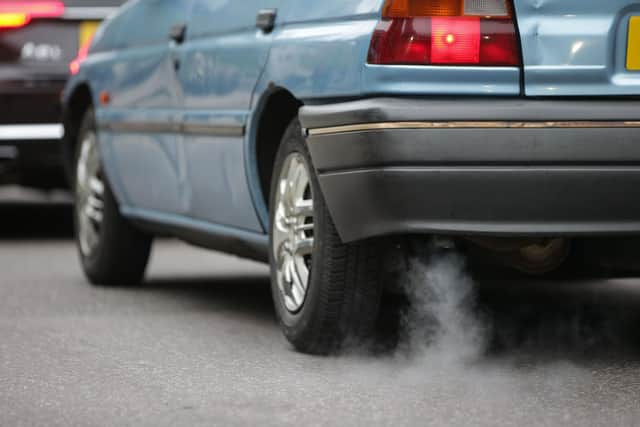Air pollution: levels above global health guidelines at Wigan monitoring site
and live on Freeview channel 276
Analysis of pollution measurements by NationalWorld shows levels of fine particulate matter PM2.5 were above the level set down by the World Health Organisation (WHO) across Greater Manchester and the country last year.
The Government said it is aiming to cut pollution levels, but environmental organisations say more needs to be done.
Advertisement
Hide AdAdvertisement
Hide AdThe analysis measured the annual mean level of PM2.5 at monitoring sites in the Automatic Urban and Rural Network (AURN), which measure air quality across the country.


The UK legal limit is an annual average of 20 micrograms per cubic metre, but the WHO halved its guideline last year from 10 to just five micrograms per cubic metre.
Out of 60 monitoring sites which provided sufficient data to analyse, only two across the UK had an annual average lower than the newest guideline.
The monitoring station in Wigan recorded an average of 8.38 micrograms per cubic metre.
Advertisement
Hide AdAdvertisement
Hide AdPollution levels dropped in 2020 when the coronavirus hit and the figures for 2021 were still below those recorded pre-pandemic.
Particulate matter is everything in the air that is not a gas. The tiniest particles, known as PM2.5, are particularly hazardous to health because they can pass through the lungs into the bloodstream, potentially damaging other organs.
These fine particles – far smaller than the width of a human hair – are known to cause asthma, chronic obstructive pulmonary disease and lung cancer.
They come mainly from traffic fumes, but also through industrial processes and wood and coal fires.
Advertisement
Hide AdAdvertisement
Hide AdLevels of disease caused by air pollution are on a par with those caused by smoking, according to the WHO.
It estimates that air pollution causes 4.2m early deaths worldwide each year.
Unveiling tougher new guidelines last year, it said there was “now a much stronger body of evidence to show how air pollution affects different aspects of health at even lower concentrations than previously understood”.
Particulate air pollution contributed to one in every 18 deaths of over-30s in England in 2020, according to Government estimates.
Advertisement
Hide AdAdvertisement
Hide AdHowever, this estimate could be affected by pollution levels dipping in 2020 due to restrictions brought in to combat Covid-19.
Defra said it aimed to cut exposure to particulate pollution by more than a third by 2040, compared with 2018 levels.
A spokesman said this would result in up to 214,000 fewer cases of cardiovascular disease, 56,000 fewer strokes, 70,000 fewer cases of asthma and 23,000 fewer cases of lung cancer over the course of 18 years.
But Friends of the Earth called for more to be done.
Its air pollution campaigner, Jenny Bates, said: “For far too long too little has been done to protect people from the scourge of air pollution, which particularly affects the young, the elderly and the most disadvantaged.
Advertisement
Hide AdAdvertisement
Hide Ad“Particular action is needed to cut levels of the most health damaging fine particles, which can get deep into the lungs and bloodstream and can lead to disease and early death.
“The new Prime Minister must go further and quicker to reduce pollution from PM2.5. The planned target should be brought forward to 2030, with tougher World Health Organisation levels achieved shortly after.”
